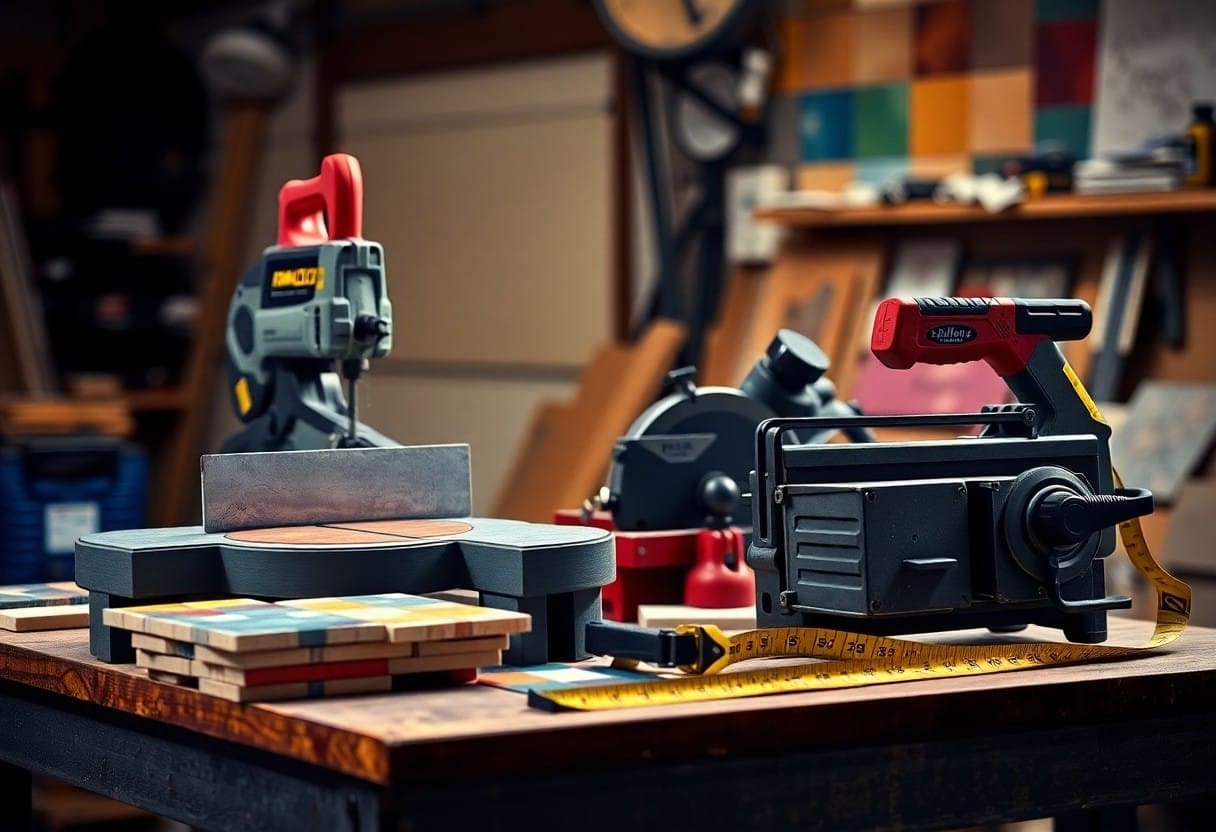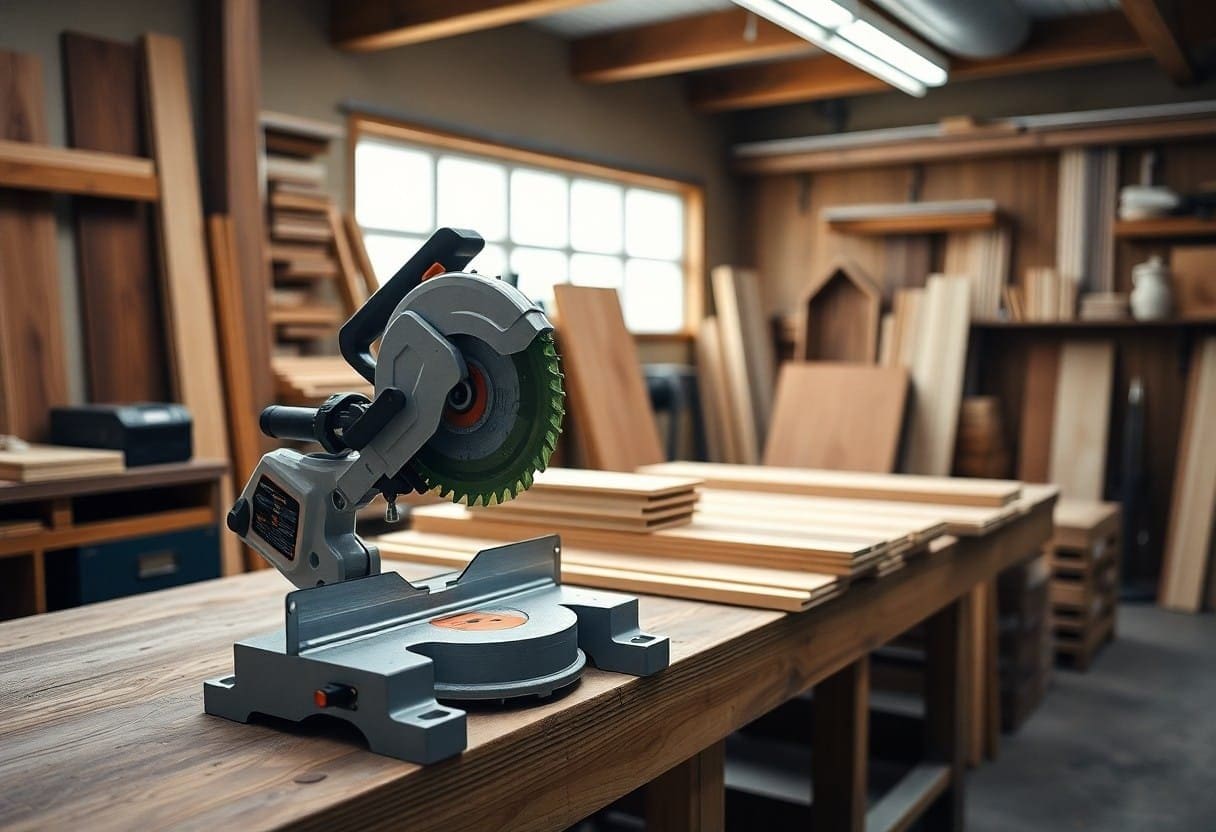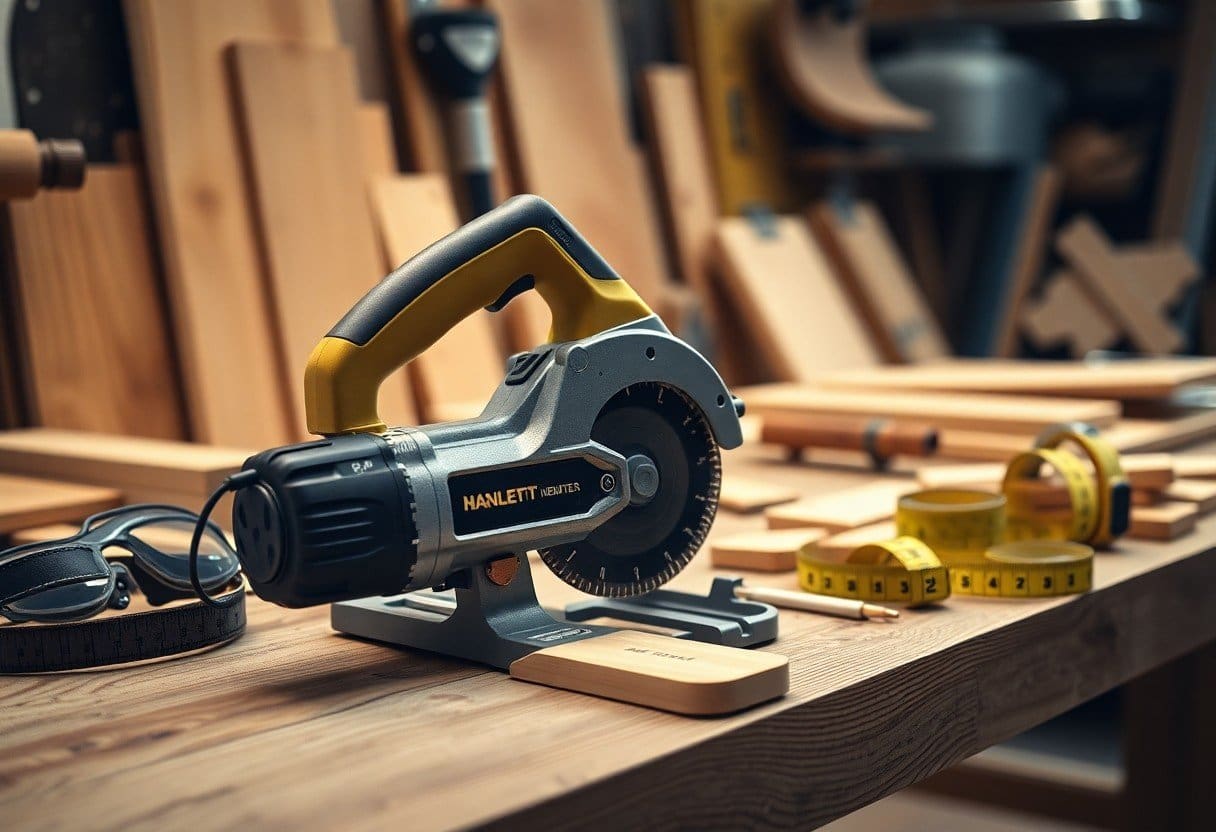Many of you may feel intimidated by power tools, but they can be your best friends when it comes to home improvement projects. In this guide, you will learn how to use power tools efficiently and safely, allowing you to tackle DIY tasks with confidence. From drills to saws, we’ll cover the basics and provide tips for success. So grab your tools and get ready to elevate your home improvement game!
Choosing the Right Power Tools for Your DIY Project
Factors to Consider When Selecting Power Tools
Before venturing into your DIY project, you need to consider a few key factors when selecting the right power tools for the job. The size and complexity of your project will determine the type of power tools you need. Think about the power source – battery-operated, corded electric, or pneumatic – that will work best for your project. Consider the ergonomics of the tools – ensuring they are comfortable and easy to handle for extended periods of time. Evaluate the durability and quality of the power tools to ensure they can withstand the demands of your project.
- Size and complexity of your project
- Power source – battery-operated, corded electric, or pneumatic
- Ergonomics and comfort
- Durability and quality
The right power tools can make your DIY project more efficient and enjoyable. Choose tools that match the needs of your project and feel comfortable to use. The right selection of power tools can help you achieve professional results at home.
Top Power Tools for Common DIY Tasks
Common DIY tasks such as drilling, cutting, sanding, and fastening require specific power tools to get the job done effectively. Having a cordless drill is important for various projects, from assembling furniture to hanging shelves. A circular saw is perfect for making straight and precise cuts in wood and other materials. A random orbital sander helps you achieve smooth and even surfaces, while a cordless screwdriver simplifies fastening tasks.
Factors such as power, versatility, and ease of use are important when choosing power tools for common DIY tasks. Investing in reliable and multipurpose tools can save you time and effort while working on your projects.
Tips for Buying Power Tools on a Budget
One of the key factors to keep in mind when buying power tools on a budget is to prioritize important tools that align with your most common DIY projects. Identify the must-have tools that will serve you well in a variety of tasks, allowing you to build your collection over time. Consider purchasing pre-owned or refurbished power tools to save money while still getting quality equipment.
- Start with important tools
- Consider pre-owned or refurbished options
With careful planning and prioritizing, you can build a collection of power tools that meet your DIY needs without breaking the bank. Recognizing the value and versatility of each tool will help you make smart budget-friendly choices for your projects.
Safety Precautions for DIY Home Improvements
Essential Safety Gear for Power Tool Users
Some of the important safety gear you should always have on hand when using power tools for DIY home improvements includes safety goggles, ear protection, a dust mask, and work gloves. Safety goggles protect your eyes from flying debris, while ear protection helps prevent hearing damage from loud power tools. A dust mask is important for reducing inhalation of harmful particles, and work gloves protect your hands from cuts and scrapes.
How to Prevent Common DIY Accidents
Clearly, accidents can happen when working on home improvement projects, but there are ways to prevent common DIY mishaps. An important tip is to always read the tool manuals and follow the manufacturer’s instructions carefully. This will help you understand how to use the tools safely and effectively, reducing the risk of accidents.
With proper training and practice, you can also minimize accidents by maintaining focus and attention while using power tools. Avoid distractions and take breaks when needed to prevent fatigue, which can lead to lapses in concentration and potential accidents.
Creating a Safe Working Environment
You can further enhance safety by creating a safe working environment in your DIY space. Precautions such as ensuring proper lighting, keeping your workspace clean and organized, and securing cords to prevent tripping hazards can greatly reduce the risk of accidents. Having a fire extinguisher nearby and a first aid kit readily available is also crucial in case of emergencies.
Mastering Basic Power Tool Techniques
How to Properly Hold and Operate Power Tools
After acquiring the necessary power tools for your DIY projects, the next step is to learn how to properly hold and operate them. If you are new to using power tools, it’s important to start with the basics. Always hold the tool with both hands for better control and stability. Keep a firm grip on the tool and make sure your hands are away from the cutting or drilling area to avoid accidents.
Tips for Cutting, Drilling, and Sanding Like a Pro
If you want to achieve professional-looking results in your DIY projects, mastering the art of cutting, drilling, and sanding is crucial. Clearly mark the cutting or drilling area before starting to ensure accuracy. Use a guide or template if needed to help you make precise cuts. Additionally, always wear safety goggles to protect your eyes from flying debris.
- When drilling, start with a smaller drill bit before moving on to a larger one for better control and accuracy.
- Assume that the blade or bit is always sharp and handle with caution to prevent injuries.
Troubleshooting Common Power Tool Issues
Like any equipment, power tools can sometimes encounter issues while in use. Properly troubleshooting these common problems can help you avoid delays in your DIY projects. If you notice the tool making unusual noises or vibrating excessively, immediately turn it off and inspect for any loose parts or malfunctions. Cleaning the tool regularly and following manufacturer’s maintenance recommendations can prevent many common issues from occurring.
More Info about Troubleshooting Common Power Tool Issues
Properly maintaining your power tools and using them correctly can significantly reduce the chances of encountering problems. Keep your tools clean and store them in a dry place when not in use to prolong their lifespan. Regularly check the power cords for any damage and replace them if necessary to prevent electrical hazards.
- Assume that regular maintenance of your power tools is necessary to keep them in good working condition.
Efficient DIY Project Planning
How to Create a Realistic Project Timeline
Now, when commenceing on a DIY project, the first step is to create a realistic project timeline. Consider the scope of the project, your availability, and any potential obstacles that may arise. Breaking down the project into smaller tasks can help you estimate the time needed for each step more accurately.
Factors to Consider When Estimating Project Costs
Some factors to consider when estimating project costs include materials, tools, labor, and unexpected expenses. Research the costs of materials and tools beforehand, and don’t forget to account for any additional help you might need. Remember that unexpected expenses can arise, so it’s imperative to have a contingency fund.
- Research prices for materials and tools to get accurate estimates.
- Don’t forget to budget for unexpected expenses that may come up during the project.
- Always have a contingency fund to cover any unforeseen costs.
An important factor to consider when estimating project costs is the quality of materials you choose. While it can be tempting to opt for the cheapest options, higher-quality materials can save you money in the long run by lasting longer and requiring less maintenance. Additionally, investing in good tools can make your DIY projects easier and more efficient.
- Quality materials may cost more initially but can save you money in the long run.
- Investing in good tools can make your DIY projects easier and more efficient.
Tips for Prioritizing Tasks and Avoiding Delays
Project planning is crucial for prioritizing tasks and avoiding delays. Start by creating a detailed to-do list, breaking down the project into smaller tasks. Prioritize tasks based on deadlines, dependencies, and the availability of resources. This will help you stay on track and prevent any delays that could derail your project.
- Break down the project into smaller tasks to make it more manageable.
- Set deadlines for each task to keep yourself accountable.
- Consider the dependencies between tasks to plan your schedule effectively.
Planning ahead and anticipating potential challenges can also help you avoid delays. For instance, if you know that certain materials have a long lead time for delivery, you can order them well in advance to prevent hold-ups in your project. Flexibility is key in DIY project planning, so be prepared to adjust your timeline if unexpected issues arise.
- Avoid delays by planning for potential challenges ahead of time.
- Be flexible and willing to adjust your timeline if needed.
Power Tool Maintenance and Repair
How to Clean and Store Power Tools for Long-Term Use
All of your power tools require proper maintenance to ensure they perform efficiently and have a long lifespan. After each use, make sure to clean your tools using a soft brush or cloth to remove any dust or debris. You can also use compressed air to blow out any leftover residue in hard-to-reach areas. Store your power tools in a dry area to prevent rust or corrosion, and consider using cases or organizers to keep them organized and protected.
Troubleshooting Common Power Tool Problems
Tools may encounter issues from time to time, but many common problems can be easily resolved at home. If you notice your power tool is overheating, check for any obstructions in the air vents and clean them out. For issues with power loss, make sure the power source is working correctly, and the cord or battery is not damaged. If you’re still experiencing problems, refer to your tool’s manual or contact the manufacturer for further assistance.
Understanding how to troubleshoot common power tool problems can save you time and money by avoiding unnecessary repairs or replacements. By familiarizing yourself with your tools and their potential issues, you can quickly identify and resolve problems on your own, keeping your projects on track.
When to Repair or Replace Your Power Tools
Over time, your power tools may start showing signs of wear and tear, such as decreased performance or strange noises. When deciding whether to repair or replace a tool, consider the cost of the repair versus purchasing a new one. If the repair cost is approaching or exceeding the price of a replacement, it may be more economical to invest in a new tool. Additionally, if a tool is outdated or no longer meets your needs, it might be time to upgrade to a newer model.
Power tools can be a significant investment, so it’s necessary to weigh the pros and cons of repairing versus replacing. By evaluating the condition of your tools and considering factors like cost and functionality, you can make an informed decision that best suits your DIY needs.
Advanced Power Tool Techniques for DIY Success
Unlike basic power tool techniques, advanced power tool techniques require a higher level of skill and precision. These techniques are crucial for tackling complex DIY projects and achieving professional-level results. Here are some advanced power tool techniques that you can use to take your DIY skills to the next level:
- How to Use Power Tools for Complex DIY Projects
Power Tool Technique Use Advanced Cutting Techniques Perfecting intricate cuts for precise assembly Joinery Methods Creating strong and seamless joints for professional-looking finishes - Tips for Working with Different Materials and Surfaces
Power Tool Technique Use Adjusting Speed and Pressure Adapting to different material densities for optimal results Choosing the Right Blade or Bit Ensuring compatibility and efficiency based on material type
How to Use Power Tools for Complex DIY Projects
Power tools are vital for completing complex DIY projects efficiently and effectively. When working on intricate tasks such as detailed cuts or sophisticated joinery, advanced power tool techniques come into play. Perfecting your cutting techniques and mastering various joinery methods will help you achieve professional-level results in your projects. By utilizing these advanced techniques, you can elevate the quality and precision of your DIY work.
Tips for Working with Different Materials and Surfaces
Materials and surfaces vary in density, composition, and characteristics, requiring specific considerations when using power tools. Adjusting the speed and pressure of your power tools based on the material you are working with is crucial for achieving optimal results. Additionally, choosing the right blade or bit for the task at hand ensures compatibility and efficiency, ultimately leading to better outcomes. Any mistakes in material handling can affect the final look and durability of your project.
Materials and surfaces play a significant role in the success of your DIY projects. Different materials such as wood, metal, or plastic require specific power tool techniques for cutting, shaping, or joining. Understanding how to work with various materials will help you tackle a wider range of projects with confidence. Any errors in handling materials can compromise the structural integrity and aesthetics of your creations.
Advanced Safety Precautions for Complex DIY Projects
- To
Safety Precaution Importance Proper Eye and Ear Protection Preventing injuries and hearing damage Dust and Debris Extraction Maintaining a clean and safe working environment
To ensure your safety while working on complex DIY projects, it is vital to practice advanced safety precautions. Proper eye and ear protection are crucial when using power tools to prevent injuries and hearing damage. Additionally, implementing dust and debris extraction systems will help maintain a clean and safe working environment, reducing the risk of accidents and health hazards.
- Projects
Safety Precaution Importance Proper Tool Maintenance Ensuring tools are in good working condition for safe operation Advanced Tool Handling Techniques Training in proper tool usage for injury prevention
Final Words
As a reminder, using power tools for your DIY home improvement projects can help you work more efficiently and achieve professional-quality results. By following safety guidelines, practicing with the tools beforehand, and choosing the right tool for the job, you can successfully tackle various projects around your home. Remember to always prioritize safety and precision when using power tools, and don’t hesitate to seek out tutorials or guidance if you’re unsure about a particular task.




